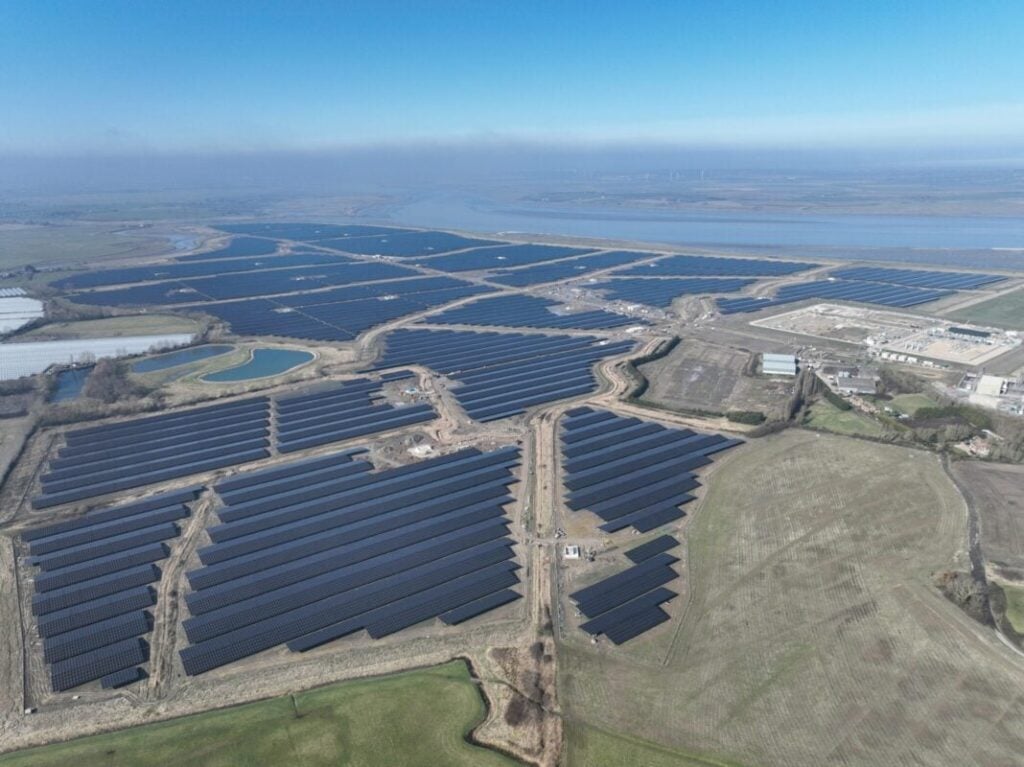
A study by Lancaster University shows 90GW of solar capacity would need just 0.39% of the land not already hosting a solar farm in the UK.
Scientists at Lancaster University studied satellite images of the UK to assess how much land solar power plants cover for a study conducted in collaboration with NextEnergy Capital and published in the journal Progress in Energy.
The study found that if solar deployment continues with the same proportion of rooftop PV to ground-mounted as it has thus far (ground-mounted accounting for about 55% of the total), then to meet the ambitious 50GW capacity targeted for 2030, just 0.22% of additional land would have to host solar generation technology.
To meet the highest ambition target of 90GW of solar generation by 2050, 0.39% of the land not already hosting a solar farm would be needed.
If all future solar installations were ground-mounted, rather than a mixture of ground-mount, rooftop and floating, then to meet those same targets 0.4% and 0.72% would be needed respectively.
The paper covers the first solar farm dataset to be produced using manual digitisation methods from satellite imagery. Looking at the current state of UK land use, the results show that between 15,580 and 17,364 hectares are occupied by solar developments.
This range is given because, while the lower figure is what satellite imagery showed, researchers have taken into account remaining solar sites registered on the government’s Renewable Energy Planning Database that do not appear in satellite images because available imagery of the UK differs in age.
Previous figures suggested that ground mount solar PV used about 0.08% of the UK’s land, an estimate extrapolated from the generating capacity of and land occupied by a sample of solar power plants.
The type of land used by solar developments
According to the lead author of the study Dr Hollie Blaydes, senior research associate at Lancaster University, “having an accurate figure of UK solar farm land use is essential for properly informing future strategic planning decisions around energy and food security, boosting biodiversity and fulfilling our net zero commitments”.
The researchers say that around 95% of the land used by solar farms was formerly agricultural land. About two thirds of that was formerly arable land, and about a third improved grassland.
However, the authors highlight that it is very difficult to accurately determine the quality of agricultural land on which solar plants have been built as, they say, current agricultural land quality maps are not accurate enough for planning decisions.
As covered in the paper, according to planning guidance, solar development on the best and most versatile (BMV) land of a grade between 1-3a has required “justification by the most compelling evidence” since 2015.
It is unlikely that a large amount of the former agricultural land now used for solar PV was of a high enough quality that food security is threatened.
Professor Alona Armstrong, co-author of the study from Lancaster University, said that “land use for solar in the UK is set to continue to grow given our net zero target.
“Ensuring that they also deliver benefits to nature as well as continue to support food production will help mitigate growing land use pressure. As we move towards meeting net zero, there will be trade-offs on how we best use our land.”
However, as Armstrong noted, the land around the PV systems that make up a solar power plant can deliver benefits including providing habitat for wildlife and even grazing livestock—both of these things have been extensively covered by Solar Power Portal.

